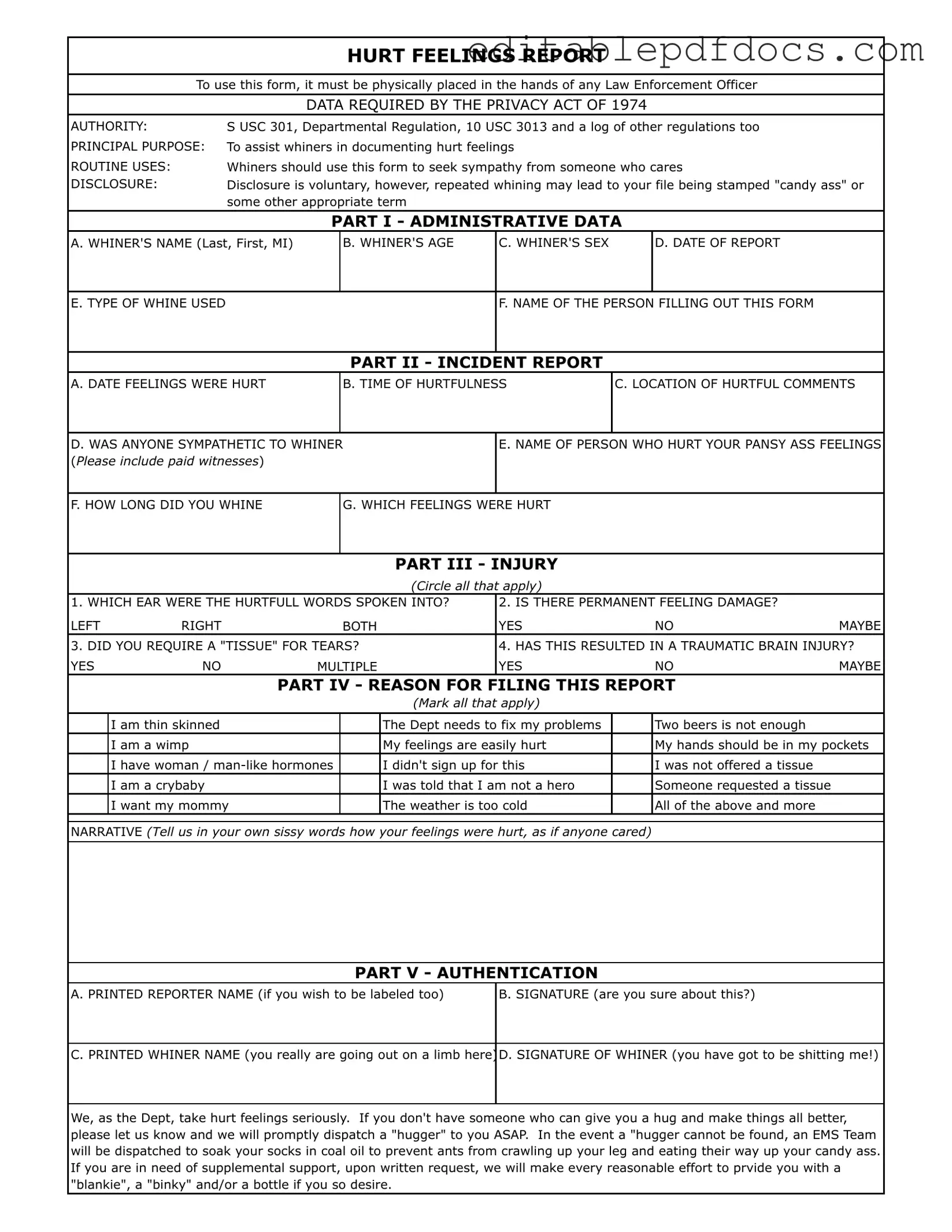The Hurt Feelings Report form serves as a tool for individuals to document instances where they perceive their feelings have been hurt. This form must be physically handed to a Law Enforcement Officer to be considered valid. It is designed to assist individuals in expressing their grievances and seeking sympathy from others. The form includes several sections, beginning with administrative data, where the individual, referred to as the "whiner," provides personal information such as name, age, and the nature of their complaint. The incident report section captures specific details about the event, including the date, time, and location of the hurtful comments, as well as the identity of the person responsible for causing the distress. Additionally, the form addresses the emotional and physical impact of the incident, asking the whiner to identify any injuries sustained, including whether they required a tissue for tears. The reasons for filing the report are also outlined, with options that reflect various emotional states and circumstances. Finally, the authentication section requires the whiner to sign the report, affirming their submission. The department emphasizes its commitment to addressing hurt feelings and offers additional support, including the provision of comfort items if needed.
